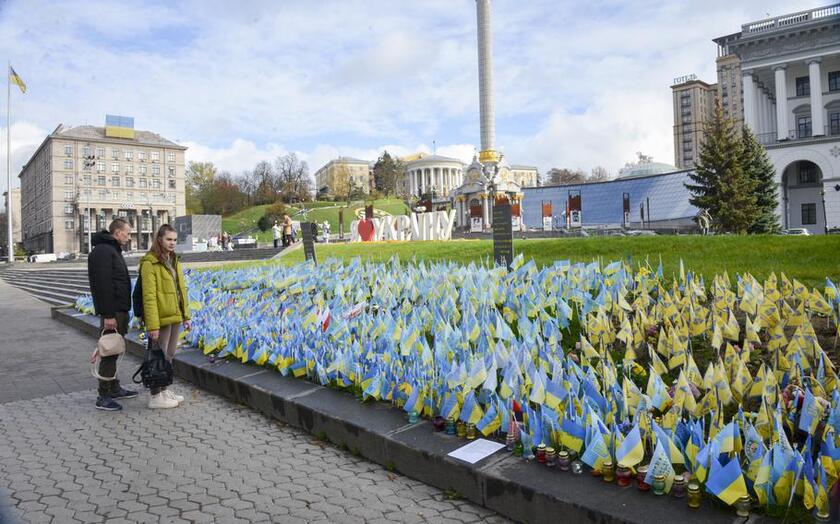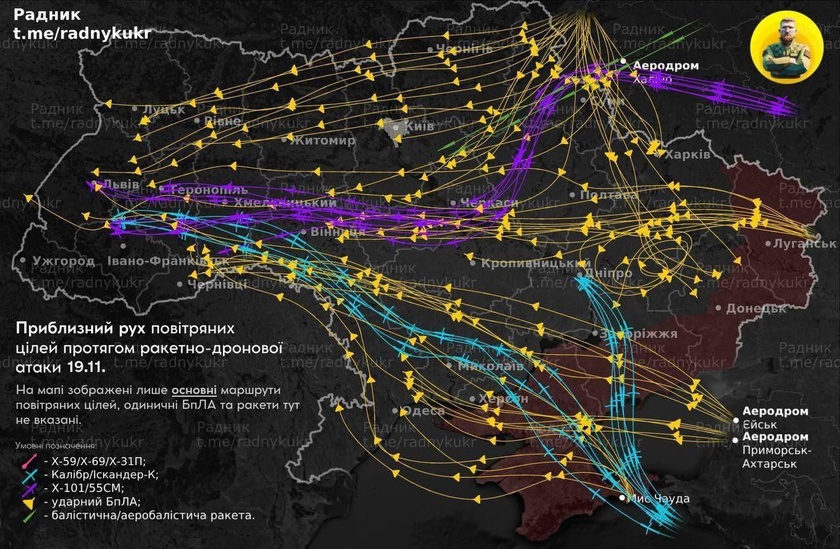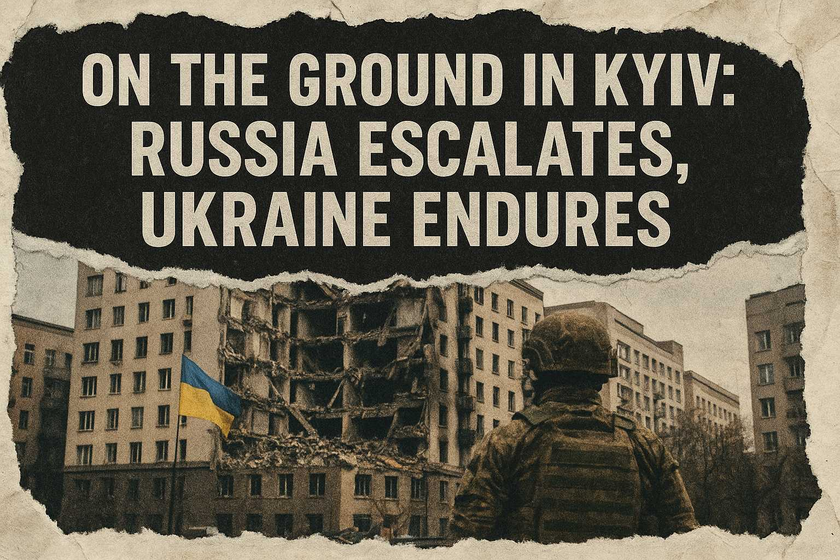I’m coming to you tonight from my hotel room in Kyiv. In just a few minutes, Nathan and I will head out to catch the night train south. But before we go, I need to bring you a full, unfiltered, on-the-ground update—because today revealed a truth most people in the West never see:
Life in Kyiv goes on… even as Russia tries every day to break it.
A City That Refuses to Die
We spent the day in downtown Kyiv—Khreschatyk Street, Maidan Square, all the places that became symbols of freedom back in 2014. I was here during the Maidan Revolution. I saw the burned-out bank. I stood at the plaza where over a hundred protesters were massacred by Russian-backed agents.
Today, that same square is full of families, strollers, workers, tourists. People are drinking coffee, playing with their kids, going to work. The only thing that hints at the cost is the long row of Ukrainian flags—each one representing a soldier who has died defending their country.
Sixty thousand dead.
Sixty thousand too many.
And still, they endure.
The Hidden War You Don’t See
If you drove around Kyiv today, you might not even realize the city gets attacked almost every single night. The damage is there—you just have to know where to look. Very often, you need someone local to take you to a block that was hit the night before.
That’s the reality here: Russia’s missiles don’t destroy a city—they destroy families.
This morning, a Kinzhal missile—a huge 20-foot-long monster carrying a ton of explosives—hit an apartment building in Ternopil. One moment people were sleeping. The next moment their world was fire, smoke, shards of glass, collapsed walls, and screaming.
At least 20 dead, 66 injured and many still missing.
The “Human Safari” — Russia’s Teenagers Trained to Kill Civilians
If you watched yesterday’s report, you saw it yourself: Russian suicide drones flown by teenage operators being trained not to hit military targets…
…but any white civilian vehicle.
I watched video after video—posted proudly by Russian channels themselves—of drones cruising down highways, slipping under camouflage nets, and waiting for a civilian car to pass.
Russia calls it the “human safari.”
That’s not my term. That’s theirs.
If you ever had doubts about who is targeting civilians—those doubts should be dead and buried now.
Ukraine Isn’t Losing—And Russia Knows It
The Western narrative says Ukraine is on the ropes.
That's wrong.
After spending the day with high-ranking Ukrainian commanders—men with decades of service, men who’ve lost friends, homes, even their own churches—I can tell you this:
They’re confident.
They’re committed.
And right now, they believe they are winning.
Ukraine is:
Striking Russian infrastructure deep inside enemy territory
Improving air defenses with new U.S. Patriot interceptors
Innovating new forms of drone warfare faster than any nation on earth
Gaining momentum on multiple fronts
Meanwhile, Russia is:
Using Iranian-made drones
Sending men into combat on Chinese motorcycles
Losing hundreds of thousands of troops
Relying on terror because they cannot win on the battlefield
One commander told me bluntly:
“If we stay united, Russia cannot win this war.”
Europe Is Waking Up — Fast
This past week alone:
Russian saboteurs blew up rail tracks in Poland
Russian drones violated NATO airspace in Poland, Romania, and Moldova
German leadership announced NATO may be at war with Russia as early as 2026
A Russian spy ship began dragging for undersea cables near the UK, prompting a military standoff
Europe is mobilizing.
Poland is practically foaming at the mouth to engage.
NATO knows the clock is ticking.
The Church Under Fire—but Growing
One of the most powerful stories today came from a Christian pastor—one of the most famous worship leaders in Ukraine, once even in Russia.
He’s lost two homes in this war.
He’s been beaten by Russian forces.
His church in Melitopol was taken.
His apartment in Kyiv was destroyed just three weeks ago.
And yet…
His new church has grown from 4 families to over 500 people in less than a year.
People are hungry for hope. They’re asking for Bibles. They’re showing up to pray. They’re coming to Christ in the middle of the fire.
Addressing the Critics
Every time I report from Ukraine, someone asks:
“Why should American taxpayers help Ukraine?”
“What about hungry kids in America?”
“Isn’t Ukraine corrupt?”
“Shouldn’t we stay out of it?”
Let me answer plainly:
We made written commitments to support Ukraine's security decades ago.
If America abandons allies, America has no allies.
If we leave the world stage, Russia, China, and Iran will shape the next century.
Ukraine is teaching the U.S. military how to fight modern war.
The money we send is less than 10% of our annual defense budget—and far cheaper than fighting Russia ourselves.
And the hungry kids in America?
That’s the job of churches, communities, and citizens—not the Pentagon.
The Human Cost You Cannot Ignore
Watch this translation from a woman in Kherson—an elderly Christian woman who has lived hell on earth:
“I saw the homes burning.
I lived in the basement because I couldn’t walk.
I saw everything.
This is a nightmare.
My son is fighting.
Our young people are dying.
How much more can we endure?”
If your heart doesn’t break hearing that…
…you might want to check if you still have one.
Where This Is Going
This war is not slowing down.
If anything, it’s accelerating.
NATO countries are preparing for open conflict
Russia is escalating asymmetric attacks across Europe
Millions remain displaced
Ukraine continues fighting with everything it has
And today, Nathan and I will be back on the front lines—to bring help where we can, and to keep showing you what the mainstream media refuses to show.
Pray for us tonight as we take the night train south.
We’re going to keep telling the truth.
We’re going to keep helping the people who need it most.
And we’re going to keep exposing Russia’s war on civilians.
This is the Hot Zone.
And this is what’s really happening.























